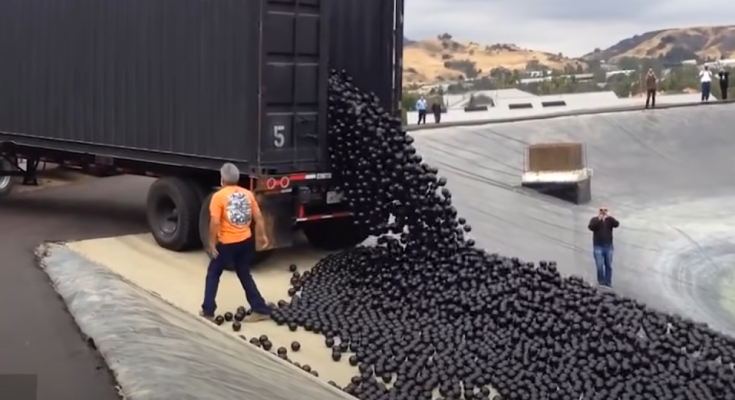LA’s Innovative Shade Ball Solution: Turning the Tide on Water Shortages
Faced with an escalating water crisis, Los Angeles turned to an unconventional and visually stunning solution: 96 million black plastic “shade balls” deployed across the city’s reservoirs. This seemingly simple yet highly effective strategy has captivated global attention — not only for its ingenuity but also for the mesmerizing sight of millions of balls floating in perfect harmony.
But what are shade balls, and how do they help conserve water? Let’s dive into this fascinating approach and its impact on water management in LA.
What Are Shade Balls?
Shade balls are small, lightweight plastic spheres made from black polyethylene, designed to float on the surface of reservoirs. Despite their simplicity, these balls are loaded with functionality:
- Evaporation Reduction: By covering the water’s surface, shade balls minimize exposure to sunlight, drastically reducing evaporation rates.
- Water Quality Protection: The shade blocks sunlight, preventing the chemical reaction between sunlight and chlorine that creates harmful bromate, a potential carcinogen.
- Cost-Effective: Compared to other solutions, such as building additional reservoirs or installing expensive covers, shade balls are relatively inexpensive and easy to deploy.
Why Did LA Need Shade Balls?
Los Angeles has been grappling with severe drought conditions for years, exacerbated by climate change and increased water demand. With water resources running low, city officials sought ways to conserve every drop possible. Reservoirs were particularly vulnerable, as evaporation during scorching summers could result in the loss of millions of gallons of water daily.
Enter shade balls — an idea that originated in the aviation industry, where similar balls were used to prevent birds from landing on airport water basins.
How Do Shade Balls Work?
The science behind shade balls is surprisingly straightforward. When spread across a reservoir, the balls form a floating barrier that reflects sunlight and reduces water temperature. This dual effect slows evaporation while also maintaining water quality. The black color of the balls might seem counterintuitive, but it was chosen for its durability and resistance to UV rays.
Moreover, the deployment process is incredibly efficient. Videos of the balls being poured into reservoirs, like a black waterfall cascading onto the water, have gone viral, showcasing the simplicity of the solution.
The Impact of Shade Balls
LA’s shade ball initiative has had measurable success:
- Water Savings: By reducing evaporation, the city estimates saving nearly 300 million gallons of water annually.
- Cost Efficiency: While the project cost approximately $34.5 million, the water conserved and the prevention of bromate contamination provide long-term financial and environmental benefits.
- Environmental Concerns: The balls are made from food-safe, UV-stabilized plastic and have a lifespan of about 10 years, making them a sustainable option for water conservation.
Criticism and Challenges
While shade balls are a groundbreaking idea, they are not without criticism. Environmentalists have raised concerns about the use of plastic and its potential long-term ecological impact. However, LA officials have ensured that the balls are safe, recyclable, and specifically designed for prolonged use in water.
Additionally, the solution is not universal; it works best in reservoirs and areas with high evaporation rates but may not be suitable for regions with different water management challenges.
A Mesmerizing Step Toward Sustainability
The sight of millions of shade balls gliding across a reservoir is both captivating and symbolic of humanity’s ability to innovate in the face of adversity. LA’s approach serves as a beacon of hope for other cities battling water scarcity, demonstrating how creative thinking can make a big impact.
As climate challenges grow more severe, solutions like shade balls remind us that even simple ideas can hold the power to transform our world — one reservoir at a time.
To see the magic in action, watch the deployment of shade balls on YouTube here.
